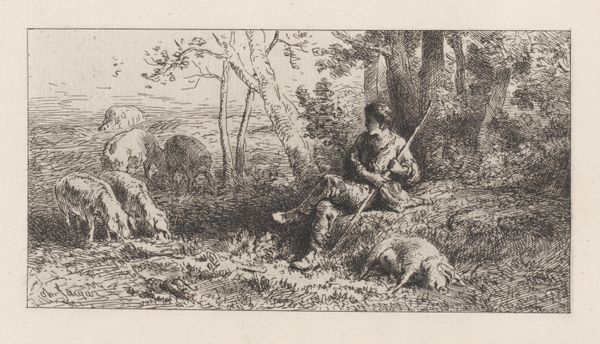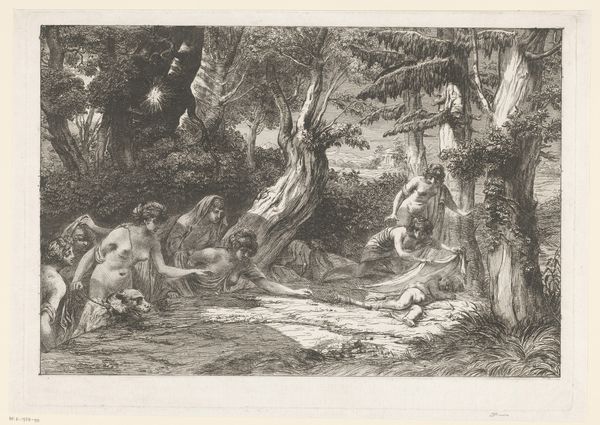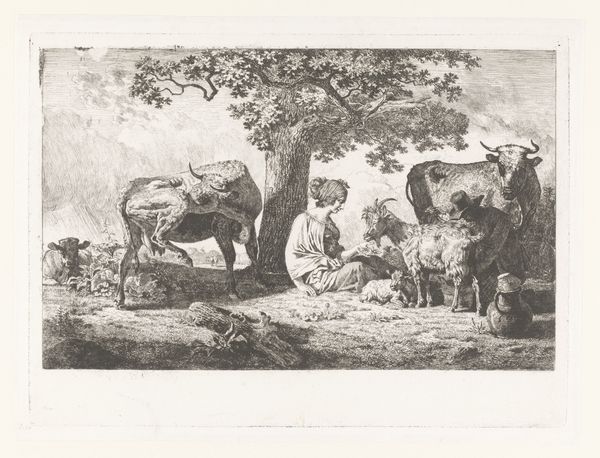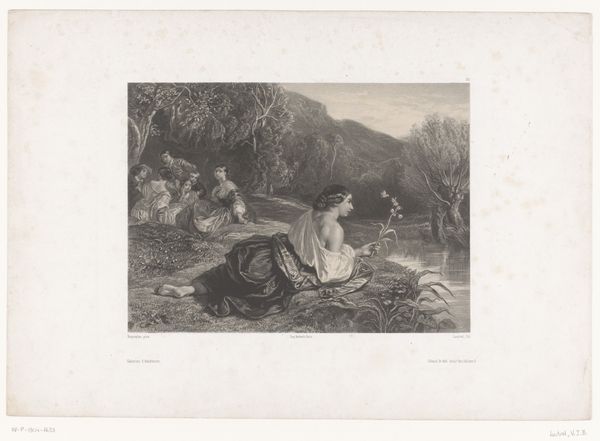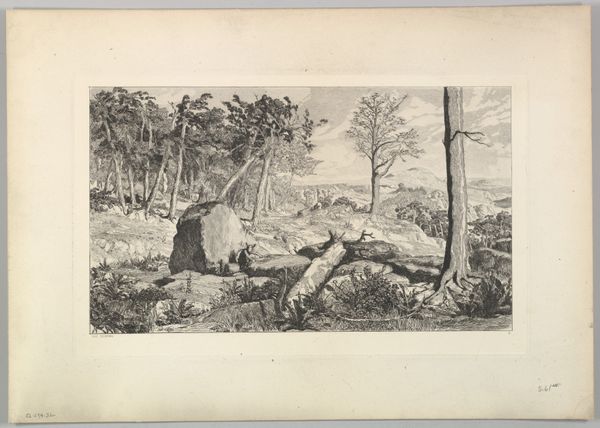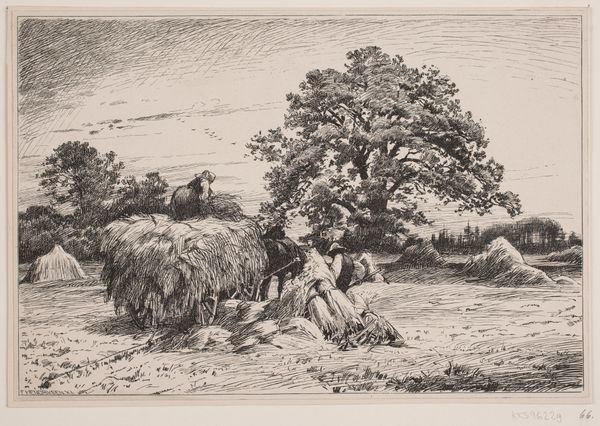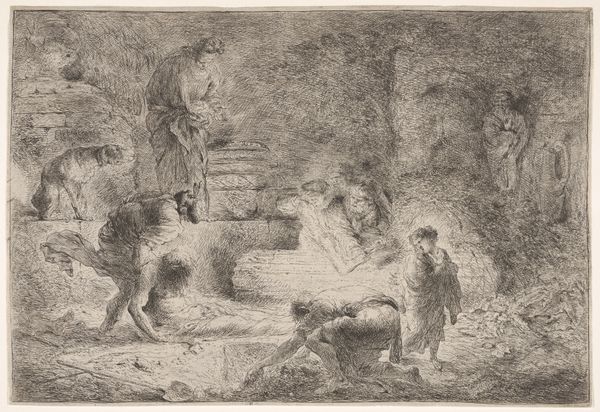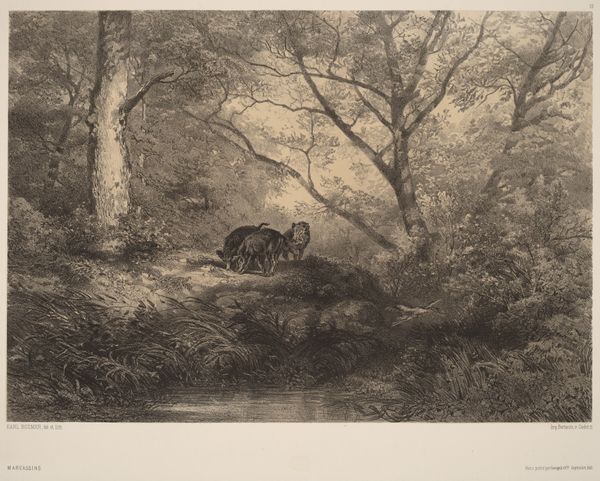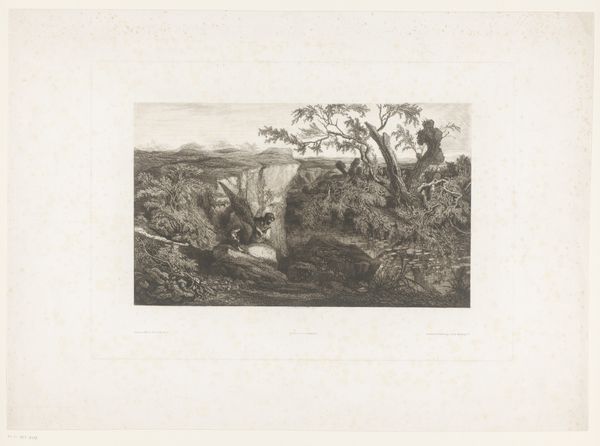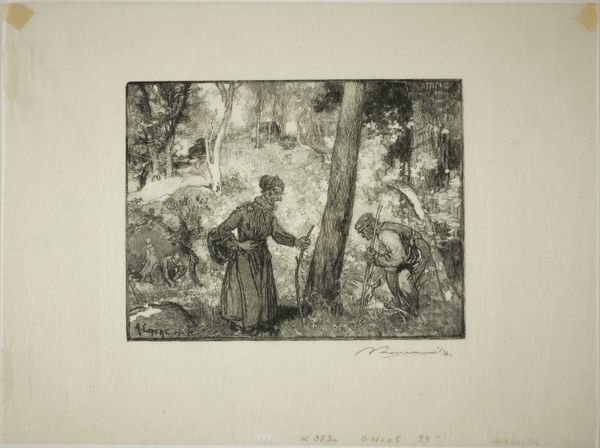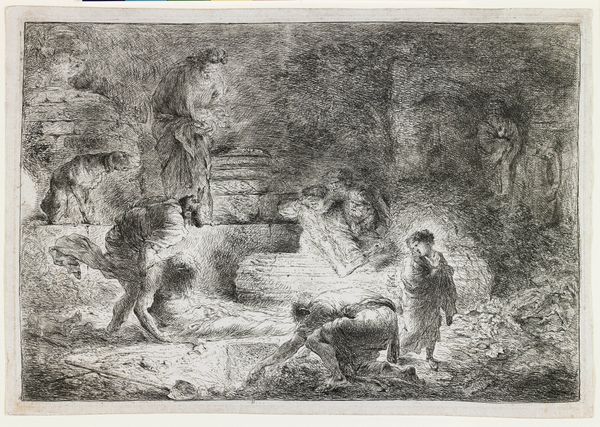
drawing, print, etching
#
drawing
#
narrative-art
# print
#
etching
#
landscape
#
figuration
Dimensions: Sheet: 9 1/2 × 13 7/16 in. (24.2 × 34.2 cm) Plate: 5 11/16 × 8 1/4 in. (14.5 × 20.9 cm) Image: 4 5/8 × 7 1/16 in. (11.8 × 18 cm)
Copyright: Public Domain
Editor: Here we have Charles Jacque’s etching "L'Enfant Prodigue," created between 1863 and 1873. There's a quiet solemnity in the lone figure overseeing the grazing sheep that's really compelling. How do you interpret this work, especially given its title? Curator: Well, immediately, "L'Enfant Prodigue" translates to "The Prodigal Son." Given the social and religious contexts of the 19th century, depictions of biblical narratives served didactic functions. However, Jacque’s landscapes are deeply rooted in the Barbizon school, which valued naturalism over idealized, grand narratives. How might we understand the collision of these traditions, and the implied political meaning of such a shift? Editor: That’s interesting. So, instead of focusing on the moral redemption aspect, is Jacque perhaps emphasizing the son's connection to the land after his period of indulgence and disconnect? The vastness of the landscape could be indicative of a return to simpler, perhaps more authentic values in opposition to rapidly industrializing urban spaces. Curator: Precisely. Consider the rise of landscape painting and its audience during this period, increasingly made of of a rising bourgeoisie shaped by social and economic transformation. By placing the biblical story within this natural setting, Jacque is imbuing the landscape with a kind of moral authority, setting it up, implicitly, as a place of salvation away from urban spaces. Do you think he idealizes rural labor in this version? Editor: Maybe…there's an undeniable sense of peace in the composition. The absence of the traditional feasting scenes we're accustomed to certainly directs focus elsewhere, lending to what might be construed as pastoral escapism. Curator: I think the narrative and visual components subtly push and pull against each other in this case, reflecting social tensions during that historical period. Jacque appropriates and reframes traditional didactic imageries, reflecting shifting cultural values Editor: I appreciate how thinking about the landscape as a social space reframes my understanding. Curator: Indeed. Historical context invites nuanced interpretations of Jacque’s piece and illuminates the complexities of artistic creation and reception in relation to social changes.
Comments
No comments
Be the first to comment and join the conversation on the ultimate creative platform.
